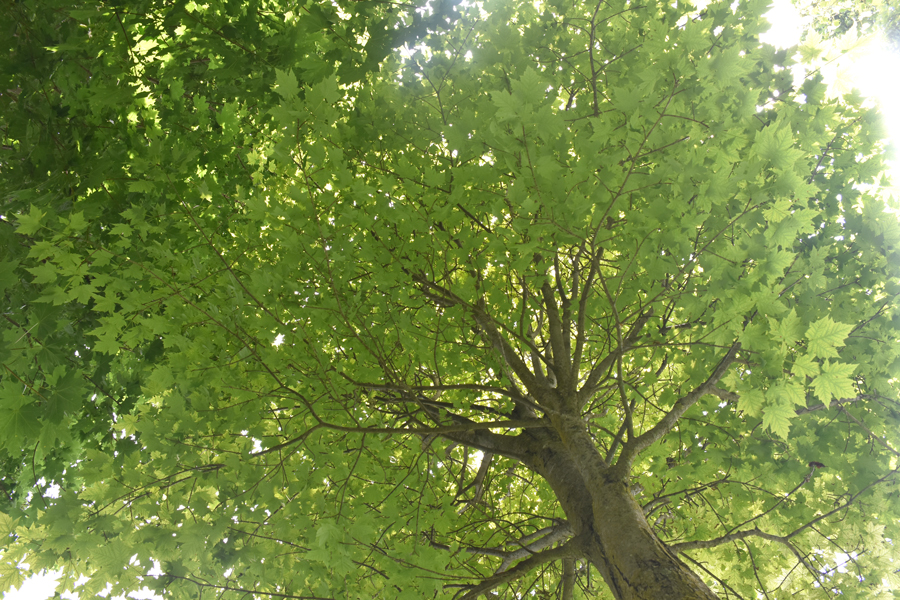CENTRE WELLINGTON – New to home ownership? Want to make that brand new house look like a home?
Plant a tree, says Toni Ellis, executive director of Tree Trust, a local organization dedicated to protecting mature trees and planting new ones in the community.
You don’t plant a tree for yourself but for future generations, is the saying, and of course it does take time for a young tree with a broomstick-sized trunk to throw much shade.
But 10 years can pass in a flash, and if you are in your forever home, in 20 years that small sapling will be something substantial.
And it’s often the mature trees in a neighbourhood that make homes look stately – and they do add value to a home, Ellis said.
In terms of landscape practice, you generally want to plant the big things first – trees and shrubs – and then place gardens and flowers around that, she said.
So, where do you begin?
“Make sure you put the right tree in the right place,” Ellis said.
“I’ve seen 40-foot conifers planted too close to the house. You have to consider how big a tree will grow. You have to look up at wires. You have to consider if it’s a sunny or shady spot.
“So go to a reputable nursery equipped with that information and they will steer you in the right direction.”
Deciduous trees are the ones that lose their leaves in fall, and they are great candidates for the front or backyard as they throw shade, provide a home for birds and a runway for squirrels.
They often turn glorious colours in the fall, and fallen leaves make great compost for future gardens.
Quick-growing deciduous trees include poplars and aspen.
Poplars are good because they adapt to poor soil, which is often what new homeowners are left with when a new development is constructed.
But they have a 30-year life span, Ellis said, “so you’ll want to plant something else that can take over when the poplar dies.”
Aspen trees also grow quickly, and their leaves make a lovely “ripple” sound in the wind, Ellis added.
She called them “pioneer trees” because they are generally the first to grow after a forest fire.
Coniferous trees throw shade too and because they retain their leaves in winter, they are often good candidates for wind breaks and providing year-round privacy in your yard.
Conifers take more space at the base than deciduous trees, so that’s a consideration when thinking about tree varieties and where you want to plant them.
Conifers planted on the north side of your home will buffer the winter wind, Ellis said.
Varieties to consider are Norway spruce, which is not native but not invasive; white pine, which likes acidic soil “but they get huge;” and hemlock, which is slow-growing and likes shade.
How to plant
Trees must also be planted correctly. Too many trees die because they are planted too deep, too shallow, in the wrong spot, and are not watered enough after planting.
That’s a waste of money, time, effort and a perfectly good tree.
Again, a nursery can give detailed instructions on how to plant, but generally, here is Ellis’s advice:
– dig a hole that’s wider and slightly deeper than the root ball of your tree or the pot it comes in;
– separate the roots a bit before placing the tree in the ground;
– the top of the root flare should be level with the ground;
– add compost before planting to add nutrients and to improve the structure of the soil;
– once planted, water your tree regularly for the first year, especially in dry spells;
– watering means a thorough soaking as far out as the tree canopy. That’s where the roots are;
– mulch after planting. But be careful with mulch, Ellis said. You don’t want the mulch touching the bark of the tree – that could lead to rot. Leave a ring around the trunk without mulch. But otherwise, mulch helps retain water in the soil and cools the roots and keeps weeds down; and
– add supports, but make sure they are not so tight that the tree can’t move in the wind. Supports can be removed once the tree is well-rooted, usually after a year or two.
Larger trees likely need special equipment to plant. Ellis suggested planting five-year-old saplings for many reasons, including ease of planting, affordability and better odds of success.
“The younger the tree, the quicker it gets established,” Ellis said. “Bigger trees take some time to get comfortable where they are. Ten years from now they will both be at the same spot, growth-wise. There’s no instant gratification.”
Trees add huge value to a home and a huge benefit to the environment. They are an investment and if you take care of them, the payback is huge, Ellis said.
“We are all so worried about climate change and we can’t stop a lot of things. But planting trees is one thing we can all do,” she said.



